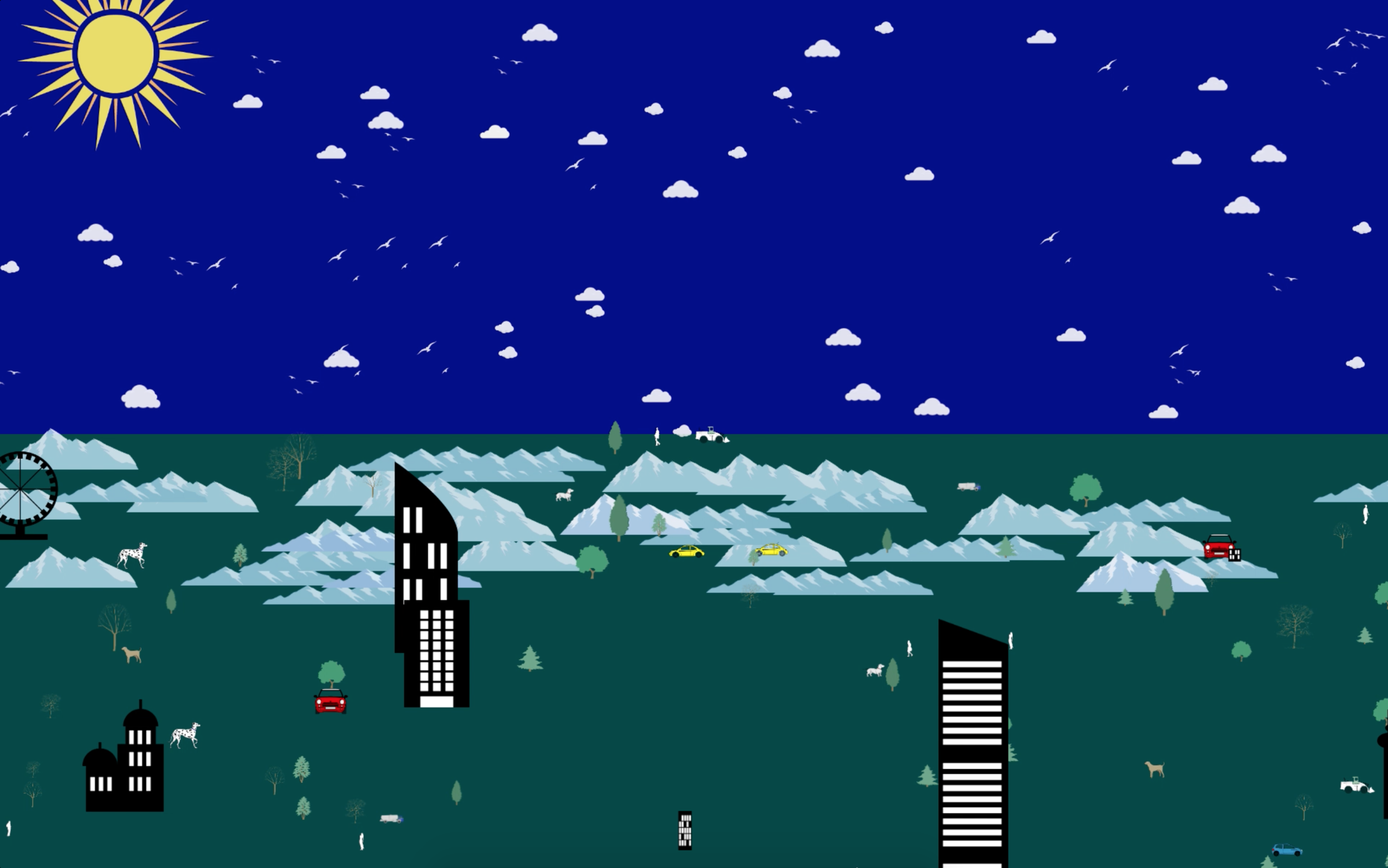Build your city
Are you building a greener city? Or you want to do something to control the climate? With machine learning, [Build your city] enables you to build your own world by your body movements and voices.
A week-long team project at Copenhagen Institute of Interaction Design.
Background
This one-week workshop was focusing on Machine Learning especially for interaction designers. It introduced the basics of machine learning in a way that is tailored to non-programmers. This workshops showed us how supervised learning can enable participants to train their own models to act upon custom inputs and assign output behaviours to them.
The theme for this workshop was UN’s 17 Sustainable Development Goals (SDGs).
Team:
- 1 interaction designer, 3 UI designer, 1 high school physics teacher, 2 project managers from all over the world
- My role: Concept generating, creative coding, document and video editing
Concept
To build your dream city is not a 'one-click' task, it requires people's engagement, care and contribution from all aspects. When we talk about 'City' nowadays, we not just talk about nice buildings and where we work, we are more thinking about the whole running system that we are in.
We want to have a more sustainable living environment and build a better future for our kids. Therefore, we take everything happening in the city into account, which means, man-made buildings, natural environment, people's activities should work together in this cycle.
Machine Learning as a tool to design with
We had an idea of making a physical interactive installation to create digital images by the audiences. Instead of using graphic interface, we used Kinetics and computer to recognise different gestures and sounds to activate certain functions. All graphics were merged in Processing.
Recognised patterns
We trained our machines with both sound and body movements, and record those movements as patterns. Each pattern triggers one action.
Outcome
(click to play)
Reflections
Since this was our first time working with machine learning, the biggest challenge was figuring out how to train our machine in the right way. It’s about the similarity and diversity of each pattern, the volume of training data, and how we use these data. We had both sound and motions to activate actions, the other challenge was to make both work without being disturbed by the surroundings. So we spent much more time on testing and validating our prototype. If we gave ourselves more time to understand the design and technology constraints, and to test with more people, we could use bigger database to improve the prototype to be more accurate and efficient.
However, the overall experience has been exciting and it has definitely broadened my skills in designing interactive experience with team members from different backgrounds.


